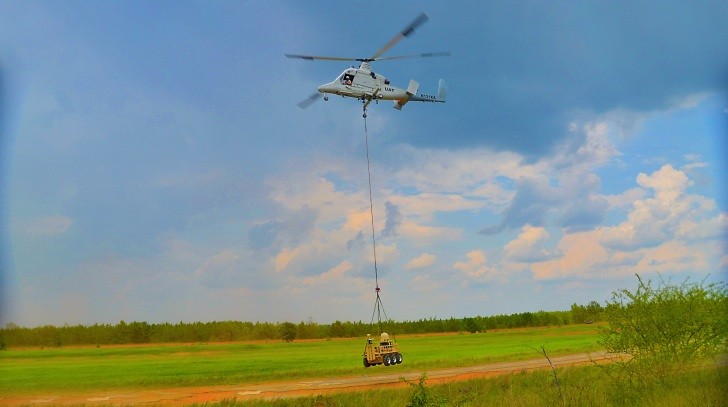The Transformers are just another step closer to become true, now that Lockheed Martin in collaboration with the U.S. Army Tank Automotive Research, Development and Engineering Center (TARDEC) successfully pulled off their first unmanned supply and protect mission.
The mission consisted in a fully autonomous resupply, reconnaissance, surveillance and target-acquisition demonstration, which used a Squad Mission Support System (SMSS) unmanned ground vehicle and a K-MAX self going helicopter.
Testing took place at Fort Benning in Georgia, where the K-MAX delivered the SMSS by sling load for an autonomous resupply mission scenario for soldiers camped in a village they had to defend.
After that, the SMSS continued the mission by moving to a suitable observation point where it raised a Gyrocam sensor to scan the area for enemy troops and notify allies.
“Fully autonomous capabilities as we’ve just demonstrated will allow service members to focus on important missions and remain out of harm’s way,” said Scott Greene, vice president of Ground Vehicles for Lockheed Martin Missiles and Fire Control. “This successful demonstration with both unmanned air and ground vehicles shows us that these missions are not only possible, but can be available much sooner than you would expect.”
In a war scenario, it’s vital to keep your troops exposed to the enemy as less as possible. And since transports are subjected quite often to insurgent attacks and IEDs (improvised explosive devices), the K-MAX was born and became the first unmanned aircraft system to deliver cargo in-theater for the US Marine Corps in 2011. It can lift 6,000 lbs (2,721 kg), can fly day and night to reach remote locations without risking any human lives.
Both the SMSS and the K-MAX are equipped with mobile Satellite Communications (SATCOM) systems along with local line-of-sight communication systems to be controlled and monitored from a distance.
Testing took place at Fort Benning in Georgia, where the K-MAX delivered the SMSS by sling load for an autonomous resupply mission scenario for soldiers camped in a village they had to defend.
After that, the SMSS continued the mission by moving to a suitable observation point where it raised a Gyrocam sensor to scan the area for enemy troops and notify allies.
“Fully autonomous capabilities as we’ve just demonstrated will allow service members to focus on important missions and remain out of harm’s way,” said Scott Greene, vice president of Ground Vehicles for Lockheed Martin Missiles and Fire Control. “This successful demonstration with both unmanned air and ground vehicles shows us that these missions are not only possible, but can be available much sooner than you would expect.”
In a war scenario, it’s vital to keep your troops exposed to the enemy as less as possible. And since transports are subjected quite often to insurgent attacks and IEDs (improvised explosive devices), the K-MAX was born and became the first unmanned aircraft system to deliver cargo in-theater for the US Marine Corps in 2011. It can lift 6,000 lbs (2,721 kg), can fly day and night to reach remote locations without risking any human lives.
Both the SMSS and the K-MAX are equipped with mobile Satellite Communications (SATCOM) systems along with local line-of-sight communication systems to be controlled and monitored from a distance.
